The state said it relied on the ‘best available science’ in a toxic mine report. Records show the science was negotiated with the company
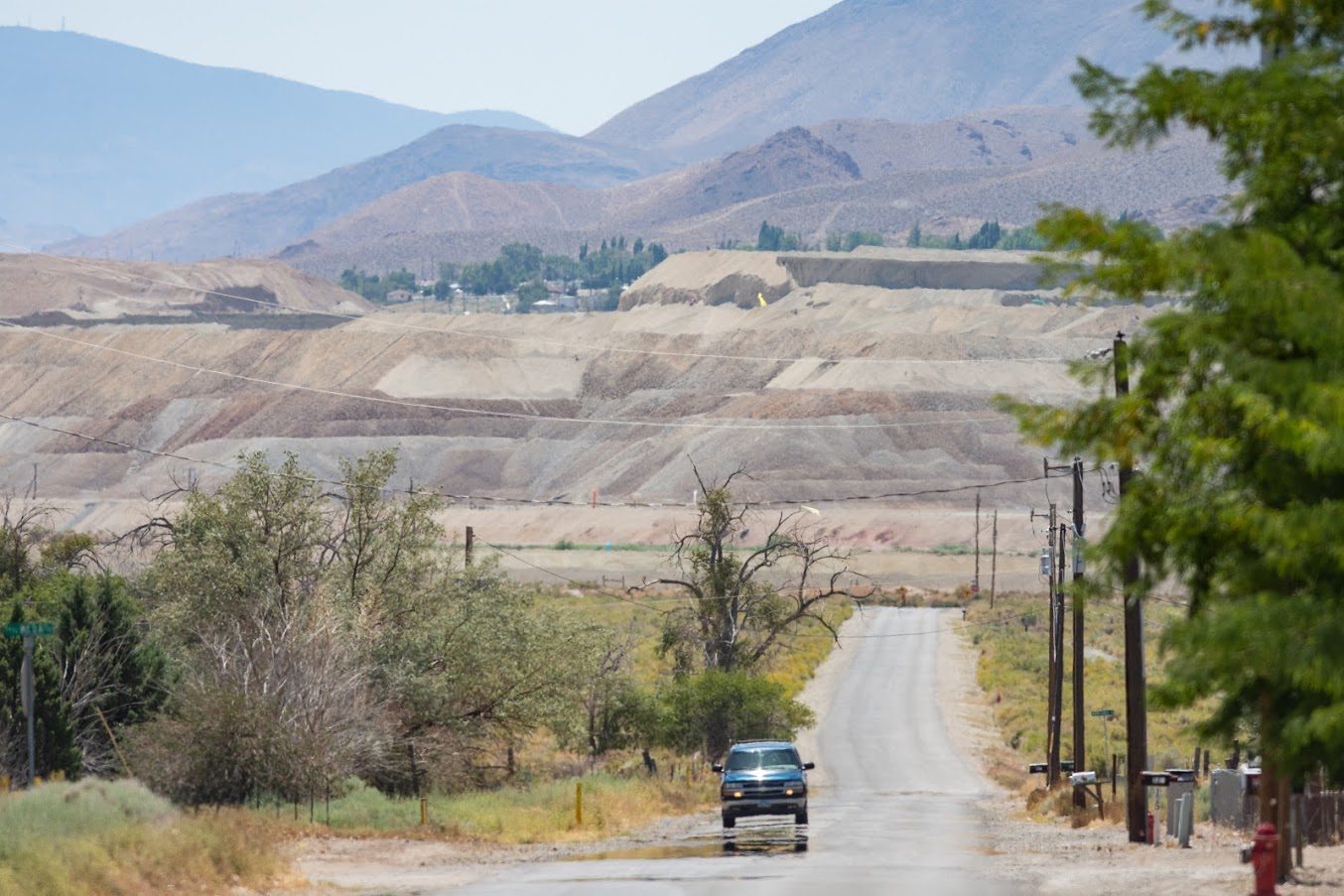
In December 2019, an official with Houston-based oil giant BP reached out to two Nevada environmental regulators with a request: BP wanted a face-to-face conversation in Carson City.
The meeting, BP Remediation Manager Chuck Stilwell wrote, would include “several layers of management” from the company and the Nevada Division of Environmental Protection (NDEP).
“Several of us will travel to Carson City for the meeting,” he wrote.
The purpose of the meeting was to discuss polluted groundwater at the Anaconda Copper Mine in Yerington, an agricultural town about 70 miles from Reno. Under federal environmental laws, BP subsidiary ARCO, a onetime mine-owner, was on the hook for cleaning up the tainted water.
BP’s request for a meeting the week of Jan. 20 made its way up the chain of command.
Jeff Collins, who leads the NDEP bureau charged with the mine cleanup, forwarded the request to Greg Lovato, the agency’s administrator, and a deputy administrator. Collins wrote that he had asked them to “provide some days and times when they are available to meet that week.”
On Jan. 23, state officials met with representatives from the company, according to NDEP emails, including an ARCO presentation, obtained through the Nevada Public Records Act.
That same day, the state entered into several management agreements with ARCO, records indicate. One agreement was of particular significance. It marked the culmination of a process that had played out behind the scenes for two years: A far-reaching revision of EPA-approved science that benefited a corporation seeking to limit its liability for groundwater contamination.
The rollback of previous findings raise key questions about whether the state agency has the technical expertise to manage the cleanup. For decades, concerned residents and two tribes, along with former Sen. Harry Reid, pushed for greater federal oversight at the mine cleanup, arguing that the EPA had more technical resources to hold the company accountable.
“The state can’t do it,” Reid said, when asked about the cleanup last November. “They don’t have the tools to do it. No, they don’t have the expertise. They don’t have the money to do it."
In 2016, the EPA had approved a report documenting extensive uranium pollution, originating at the mine, and traveling under fields, below homes and toward tribal land. In the following years, ARCO convinced state regulators to support an analysis showing less pollution tied to the mine.
The agreement forged on Jan. 23, 2020 made it official. The EPA-approved report would be “superseded” by the company’s new analysis, according to an ARCO document and emails.
An NDEP spokesperson declined to say who attended the meeting or confirm where it was held. The agency also declined multiple opportunities to provide information about the meeting.
The Nevada Independent asked for a copy of the Jan. 23, 2020 management agreements, but two officials with the agency, through NDEP Deputy Administrator Rick Perdomo, indicated that they were “not written agreements.” The Nevada Independent learned of the agreements because they were summarized in email correspondence.
Where the EPA-approved investigation had modeled tainted water extending miles away from the mine and contaminating more water than Nevada’s annual Colorado River allocation, the NDEP-approved analysis said that the mine caused less than half the pollution in the area.
The revised report said that geologic processes and farming practices, not the former mine, contaminated much of the area, a theory pushed by ARCO and accepted by state regulators.
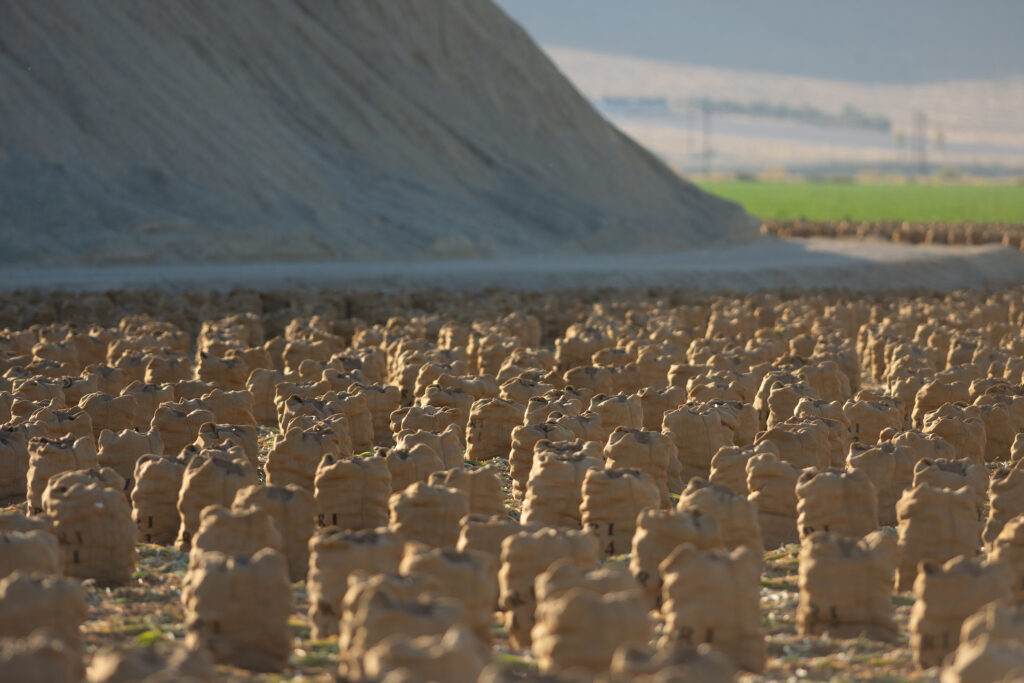
“Best available science”
When NDEP released the revised report to the public in May 2020, Lovato, in a press release, said the report would help “chart a path forward based on the best available science.”
But a review of more than 2,000 pages of NDEP records obtained by The Nevada Independent shows the “best available science” was the product of negotiation between NDEP and ARCO.
For nearly two years, environmental consultants, including, at times, experts who reviewed the company’s findings for the state, warned of potential biases in ARCO’s technical analysis and raised concerns about changes to its approach, according to a review of the public records.
In certain cases, when the state pushed back, ARCO resisted or ignored the state’s directions altogether. During the process, the Yerington Paiute Tribe, which uses the same aquifer as the former mine, appealed to the EPA for help. When a top state official found out about the tribe’s appeal, NDEP told an EPA counterpart that the “letter is an embellishment of the facts.”
NDEP, responsible for mine permitting, air quality, water quality and key elements of Gov. Steve Sisolak’s climate change strategy, did not reply to most of The Nevada Independent’s questions.
Lovato declined to provide more information “with respect to the questions about the process and progression in the determination of the extent of mine-related groundwater contamination.” He referred The Nevada Independent to past interviews, NDEP statements and public records.
“It is our hope that this next article will provide a complete, factual, and balanced review of lines of evidence related to determination of groundwater contamination, including describing the technical information on this technical matter in a thorough and accurate manner,” Lovato said, through a spokesperson, in an emailed statement on March 30.
NDEP redacted most of the technical analysis it used to evaluate the report, yet several records show NDEP employees and consultants expressed uncertainty about some of ARCO’s claims.
If ARCO is not wholly responsible for the documented contamination, it is unclear who will be. Most residents in the area have capped their contaminated wells, have access to municipal water or have a filtration system in their homes. In 2013, ARCO settled a class-action lawsuit with local residents, agreeing to pay up to $19.5 million without acknowledging any wrongdoing.
But questions remain about the effects of the contamination into the future and the risk to the environment. Polluted water, tied to the mine in the EPA-approved report, could be left without active treatment because the final NDEP-approved report reclassified it as not mine-related.
In a statement, Lovato said future use of the contaminated water, once linked to the mine, “may require treatment but there is no requirement for taxpayers to be responsible to remove that.”
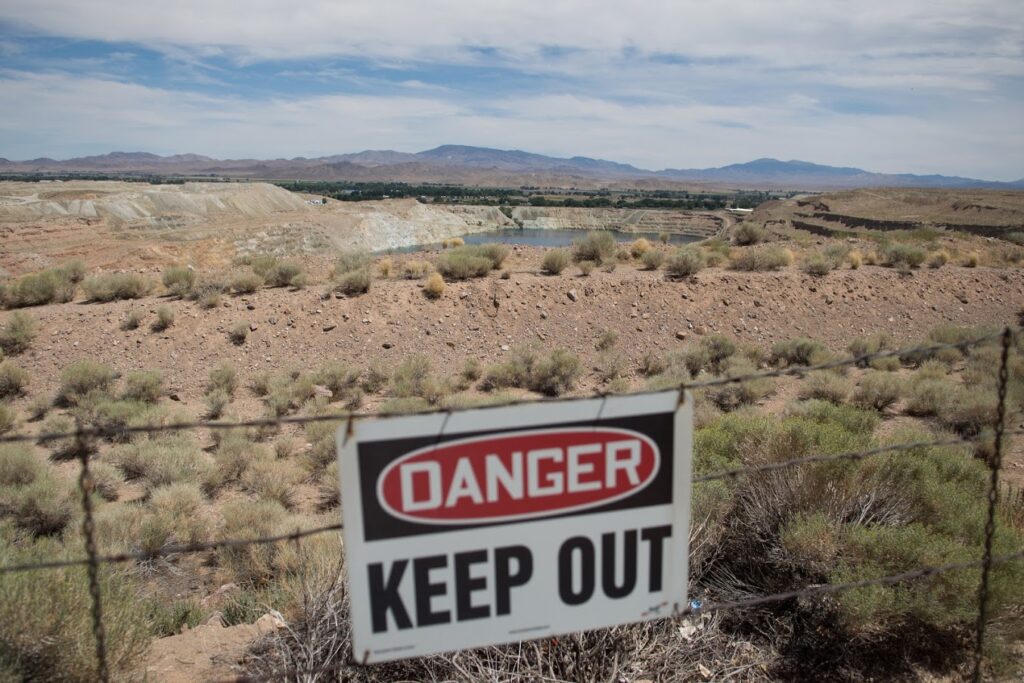
“Potentially represent a significant departure”
Underneath the valleys and mountain ranges that stretch across Nevada, significant amounts of water flow in the Earth’s soil. Even in the most remote stretches of the state, this water is used to grow crops and extract minerals. Using water is the easy part. Modeling it is far more difficult.
For one, groundwater is mostly “blind.” You can’t see it all from the surface. And it is dispersed, up and down, in rock formations: a multi-dimensional, 1000-piece puzzle stitched in the ground.
Despite these obstacles, monitoring and chemical data can help experts put the puzzle together — to visualize what can’t be seen above ground. In the case of the Anaconda Copper Mine, the EPA directed ARCO to monitor hundreds of wells and conduct chemical studies to visualize the extent of the mine pollution, or plume. How far away from the mine had the tainted water gone?
By 2016, ARCO and its contractors submitted a report, known as the Background Groundwater Quality Assessment, or BGQA. The BGQA was a key document summarizing years of data.
The BGQA underwent three revisions before the EPA approved it, and it left ARCO on the hook for a significant amount of pollution. ARCO’s own estimate suggested that, based on the BGQA, it could take 285 years to remove the quantity of water necessary to clean up the aquifer, even if 2,500 gallons were pumped each minute, according to a draft report the company filed in 2017.
The 2017 draft report estimated that uranium and other contaminants affected 385,327 acre-feet of water (an acre-foot is the amount of water required to fill one acre to a depth of one foot).
The draft report, written by consultants for the company, stated that the EPA-approved BGQA was “sufficient to characterize the groundwater system, define the nature of mine-related groundwater contamination, perform a risk assessment, and conduct a feasibility study.”
The company, in the 2017 draft report, said it was using the BGQA at the direction of the EPA to “conservatively establish the extent of mine-impacted groundwater” for finishing the final report.
Yet NDEP did not require the company to use the BGQA in the final report.
The final report, released by NDEP in May 2020, concluded that the mine was responsible for far less pollution. In the intervening three years, ARCO significantly revised its prior findings.
NDEP allowed those revisions to move forward. In a February 2020 presentation, ARCO even indicated that NDEP agreed that the “BGQA overstates the extent of [mine-impacted water].”
Revising the BGQA had its origins in 2018, when the Trump administration put NDEP in charge of the cleanup as part of then-EPA Administrator Scott Pruitt’s controversial effort to “streamline” Superfund, a program that disburses federal dollars to address the nation’s most toxic sites.
After NDEP took over as regulator in 2018, ARCO reinterpreted the data and rewrote previous conclusions to argue that very little nearby contamination was linked to the mine. ARCO began to emphasize two hypotheses: The company said water use in farming was contributing to the spread of contaminants and some of the pollution was natural, tied to geothermal activity.
NDEP has repeatedly claimed that the EPA left the door open for the revisions in the report. In an interview last summer, Lovato told The Nevada Independent that the BGQA represented “an outside estimate” of how far the mine-related contamination had traveled in the groundwater.
“And now we’ve refined that,” he said.
The BGQA, as NDEP and ARCO have argued, noted that some of the contaminants, including uranium, can be found in the area “as a result of groundwater contact with naturally-mineralized and/or hydrothermally-altered bedrock” associated with copper deposits or sediments.
But early into the revision process, EPA submitted several technical comments to the state, and its comments suggest that the EPA recognized ARCO’s changes as a shift in the approach.
Statements about the pollution in a new ARCO document, the EPA said, “potentially represent a significant departure from the conclusions reached in the final version of the [BGQA].” The EPA further said the BGQA did not “provide data to support the inclusion of geothermal activity.”
“The conclusions reached in the BGQA still appear to represent the best interpretation of the general limits of the plume of mine-impacted water,” the EPA wrote to the state in June 2018.
“If other analyses or detailed studies have been performed,” the EPA said, “it is recommended that future documents provide such studies to support conclusions regarding reinterpretation of the limits of mine-impacted water or the attribution of sources within those limits.”
The EPA, no longer in charge of managing the cleanup, did not “perform an oversight review” or “take a position” on the final NDEP-approved changes, a spokesperson for the agency said.
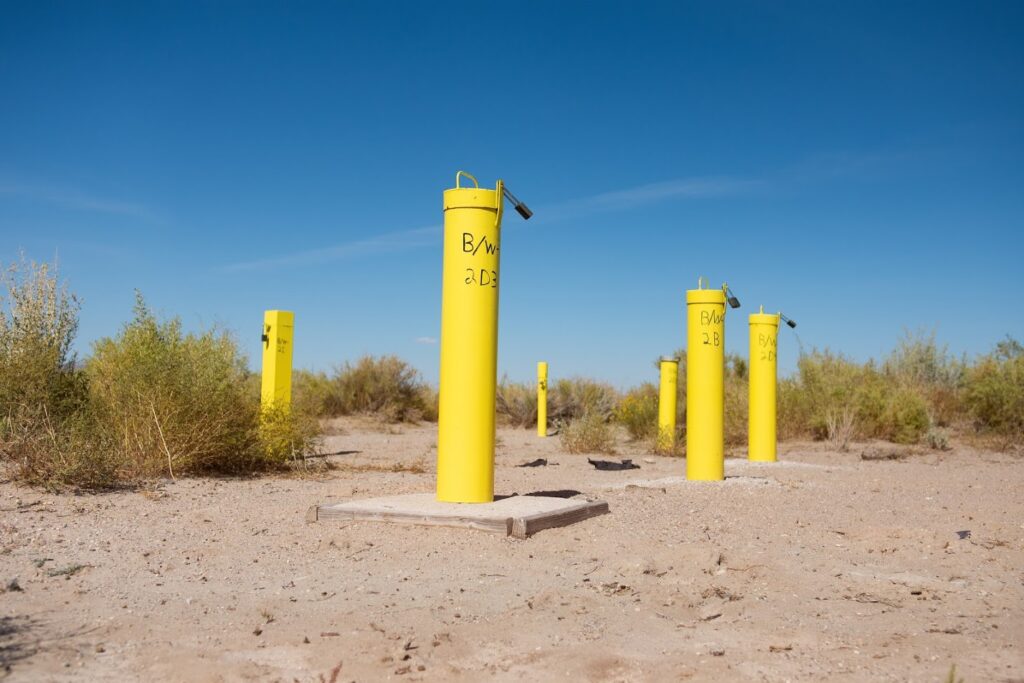
“Reduces their ultimate liability”
Before Lovato cast the final report as the “best available science” in May 2020, NDEP officials were well aware of the dynamic — that ARCO’s reinterpretation would reduce its overall liability.
In November 2019, Jeryl Gardner, a supervisor at NDEP’s Abandoned Mine Lands Branch, wrote in an email that the company’s conclusions in their geothermal analysis “reduces their ultimate liability and responsibility for any potential groundwater treatment (or even monitoring).”
The company first presented the geothermal analysis in October 2018. It attributed some of the contamination, once linked to the mine, to a naturally-occurring geothermal anomaly, a technical claim that was met with skepticism from within NDEP and also outside the agency, emails show.
After the company submitted the geothermal analysis, Gardner asked another NDEP employee, Connor Newman, to conduct a high-level review. Newman, who specializes in geochemistry, sent comments back to Gardner in late November. NDEP redacted almost all of the comments.
In an interview, Newman said he came away thinking that “the evidence was not strong enough to positively identify that as the most likely scenario” for the documented pollution in the area.
“The primary conclusion that I reached was that the conceptual model that the geothermal memo put forward was possible but not necessarily the most plausible explanation,” he said.
A year later, on Nov. 23, 2019, Gardner reached out to Newman, who was no longer working for NDEP, to ask his advice on another report assessing the validity of the company’s geothermal analysis. This new report had been prepared by Terraphase, a consulting firm hired by NDEP.
Again, NDEP redacted most of the report. Yet Gardner wrote that the “primary point” was that the geothermal hypothesis “is non-unique, and generalized, and cannot be proven conclusively.”
Gardner went on to write that “[ARCO] uses the [Geothermal Technical Memo] as a cornerstone [line of evidence] for proof that [mine-impacted water] never did, doesn’t and never will move further than just a few hundred feet north of the mine site. Obviously, for ARC, this reduces their ultimate liability and responsibility for any potential groundwater treatment (or even monitoring).”
“This sets up a particularly poignant battle with ARC soon (week after next),” Gardner wrote to Newman, asking him to share his thoughts on the Terraphase review. “I just want to make sure as we go into battle, that our arguments and conclusions are solidly, scientifically-based.”
Newman said he agreed with the “overall conclusion that the conceptual model is speculative.”
“The lines of evidence they bring up certainly could explain the groundwater geochemistry, but they are not the most likely explanation,” Newman wrote, discussing the geothermal analysis.
“Many conceptual models are theoretically possible,” he wrote, “but the best conceptual model is parsimonious in that it requires no large leaps of faith. This whole geothermal anomaly conceptual model requires some inventive reasoning to believe it is the most parsimonious explanation.”
Around the same time, a federal regulator, the U.S. Bureau of Land Management (BLM), was also expressing wariness about the geothermal analysis and the validity of ARCO’s results.
On Nov. 15, 2019, an environmental consultant for the BLM wrote in an email that a version of the geothermal analysis “seeks to shrink the mine impacted water by 90% from the previous EPA‐accepted [report] and appears that many of NDEP’s directions have not been included.”
Three days later, the BLM consultant raised concerns that “multi-variate modeling used by the Responsible Party to evaluate the impact of historical evaporation ponds on groundwater extent is insufficient and potentially biased to indicate less impact than what has actually occurred.”
By early December, Terraphase, NDEP’s contractor, had prepared a presentation questioning the validity of the geothermal analysis. One of the slides, obtained as a public record, included a title that said ARCO’s analysis “lacks compelling evidence of a fossil geothermal system.”
Still, in a Jan. 23, 2020 management agreement, NDEP and ARCO agreed that a “geothermal anomaly exists and influences water quality north of [the Anaconda Copper Mine Site], though extent of influence is uncertain,” records show. The anomaly was included in the final report.
NDEP declined to comment on these documents or provide additional context.
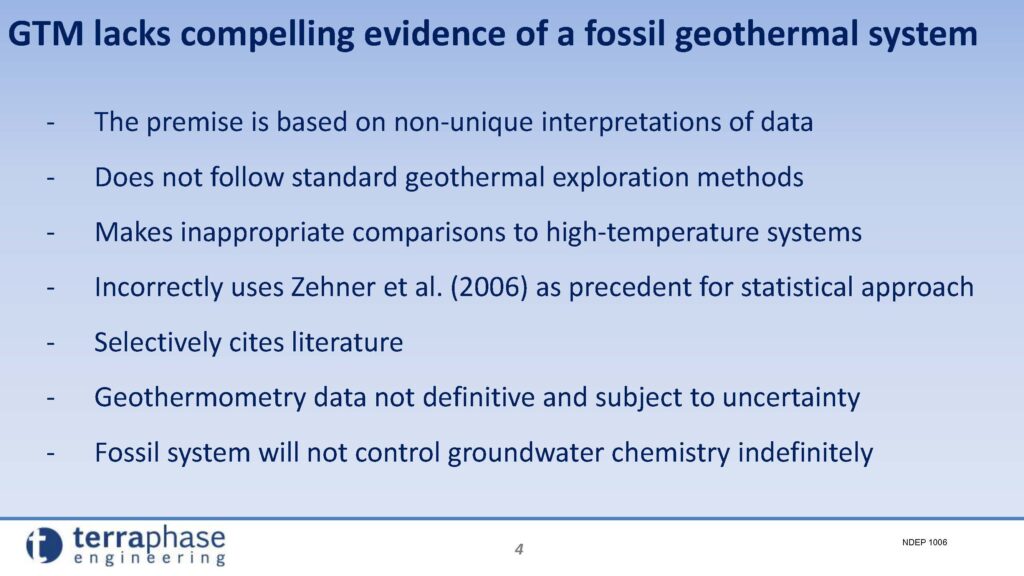
“Dramatic change in the interpretation”
From the start, the Yerington Paiute Tribe also expressed deep concern about the geothermal analysis and the consequences of significantly cutting the company’s liability for groundwater.
The mine-related groundwater pollution, as defined in the BGQA, stopped short of the tribe’s land, but the tribe has long worried about the effect of contamination on their water if the plume moves beneath its reservation. In the past, regulators had required ARCO to deliver bottled water to about 90 residences on tribal land north of the mine, where some wells are polluted.
On Nov. 28, 2018, two days after Newman submitted his comments on the draft geothermal analysis, Laurie Thom, then the tribe’s chairman, wrote a concerned letter to Lovato. The letter said the geothermal analysis was “technically incompatible with past documents” from ARCO.
For the tribe, the state’s response was unsatisfying.
In late March of 2019, Gov. Steve Sisolak met with Thom and Amber Torres, the chairman of the Walker River Paiute Tribe, which is involved in the cleanup. The day before the meeting, a copy of Sisolak’s calendar, obtained by The Nevada Independent, said he was briefed by Lovato and Brad Crowell, who leads the state’s Department of Conservation and Natural Resources.
Staff members who were present at the meeting between Sisolak, Thom and Torres recall “a concern being raised by tribal leaders over their ability to give feedback on the clean-up process in the past,” Meghin Delaney, a spokesperson for the governor, wrote in a recent email.
Frustrated with the state, the Yerington Paiute Tribe eventually appealed to federal officials for help. In April 2019, Laurie Thom wrote a letter to Mike Stoker, then the administrator of EPA Region 9, which oversees environmental regulations in Arizona, California and Nevada.
Thom described the geothermal analysis as marking a “dramatic change in the interpretation of groundwater conditions compared to the [BGQA].” She asked the EPA to step in and provide a review of the science and approach. The tribe said it had made little progress with the state.
Thom said she was concerned that the feedback NDEP provided to ARCO on major documents did not accurately reflect all of their concerns. In the letter, Thom also asserted that NDEP had not met to negotiate a memorandum of understanding with the tribe and had blocked funding.
When NDEP found out about Thom’s letter, a top NDEP official, Jeff Collins, wrote an email to his EPA counterpart that “once again, they are misrepresenting our communication.” Collins, who leads NDEP’s Bureau of Corrective Actions, attached the letter that Thom had referenced.
He said it “does not criticize, but clarifies and explains.” Collins wrote that NDEP does not send ARCO comments “that are provided as perspectives, that are unsubstantiated, unsupported and formed as opinions.” Assertions about the memorandum of understanding and NDEP blocking the tribe’s funding for technical support, he said, was “a terrible misrepresentation of the facts.”
“In light of the productive annual meeting we just had with you and your management, I suggest you make it clear to your management this letter is an embellishment of the facts,” Collins wrote.
When the EPA responded to the tribe, the federal agency noted that it was no longer the lead regulator on the site, but that it was following the issue and “generally shares” the concerns about the geothermal memo that NDEP, the BLM and the tribes expressed in comments.
Sisolak is continuing to monitor the state-led cleanup, Delaney said.
In a statement, she wrote that “the governor has faith in the Nevada Division of Environmental Protection’s ability to oversee the cleanup. Understanding that this is an important project for the community, the governor's office is keeping a close eye on how it’s handled.”
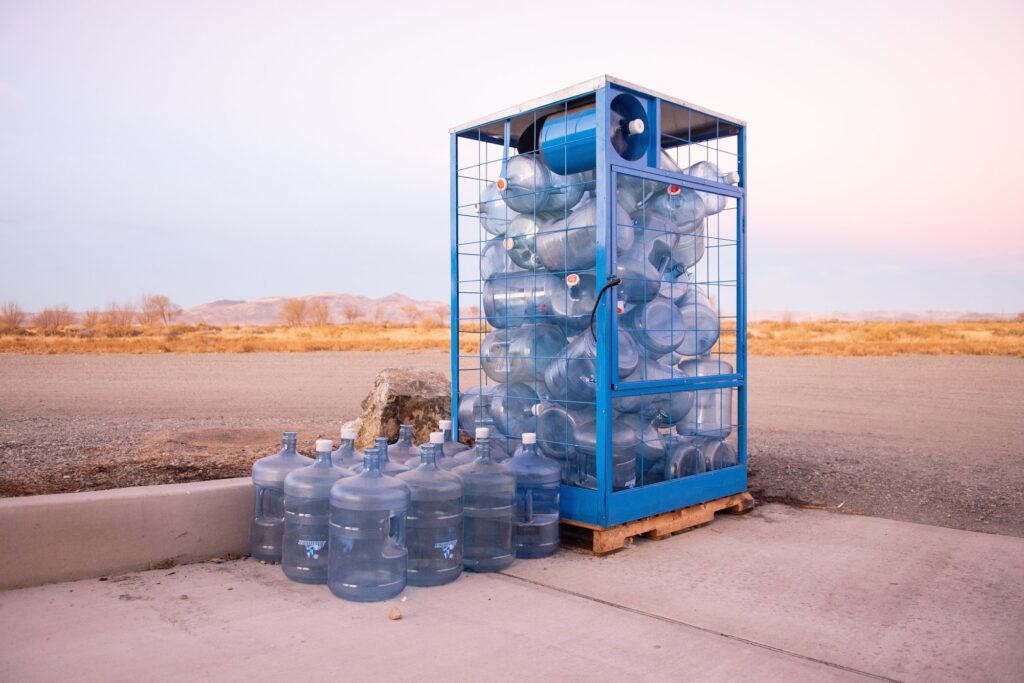
“A really problematic response on many levels”
As recently as August, consultants with the BLM questioned ARCO’s new conclusions. One expert said the final report NDEP approved “may not be supported by data or good science.”
Earlier this year, a spokesperson for the agency walked back that comment, writing in an email that the agency “fully supports NDEP with the remedial studies and finds no issues or neglect regarding the science supporting all remedial activities for [the groundwater cleanup].”
Still, records show that consultants with the federal agency regularly questioned the company’s approach and shared some of the concerns about the process for commenting on documents.
NDEP used an expedited process to review the company’s analysis. After the BLM and tribes reviewed the company’s reports, NDEP would collate their comments and send them to ARCO.
In June of 2019, the BLM flagged issues “that indicated a revision of the expedited process should be strongly considered.” In several instances, NDEP did not relay the agency’s concerns to ARCO and the company’s responses did not satisfy its concerns, a draft BLM memo stated.
When NDEP provided ARCO with directions, the company, in certain cases, declined to follow them, records show. In one instance, ARCO began using the term “mine-influenced” to describe areas where the mine was responsible for polluting the water. Under the EPA, ARCO had used a more definitive term — “mine-impacted” — to describe the extent of the mine-related pollution.
NDEP told ARCO to use the stronger wording. ARCO responded that it had decided not to. In a document in November 2019, a BLM contractor described ARCO’s response as “problematic.”
“This is a really problematic response on many levels,” the contractor wrote. “To stakeholders and the general public it indicates that [ARCO] perceives [NDEP] Directions as suggestions. This type of response really undermines the perception of the actual process being followed.”
The final groundwater report, released by NDEP in May 2020, uses the term “mine-influenced.”
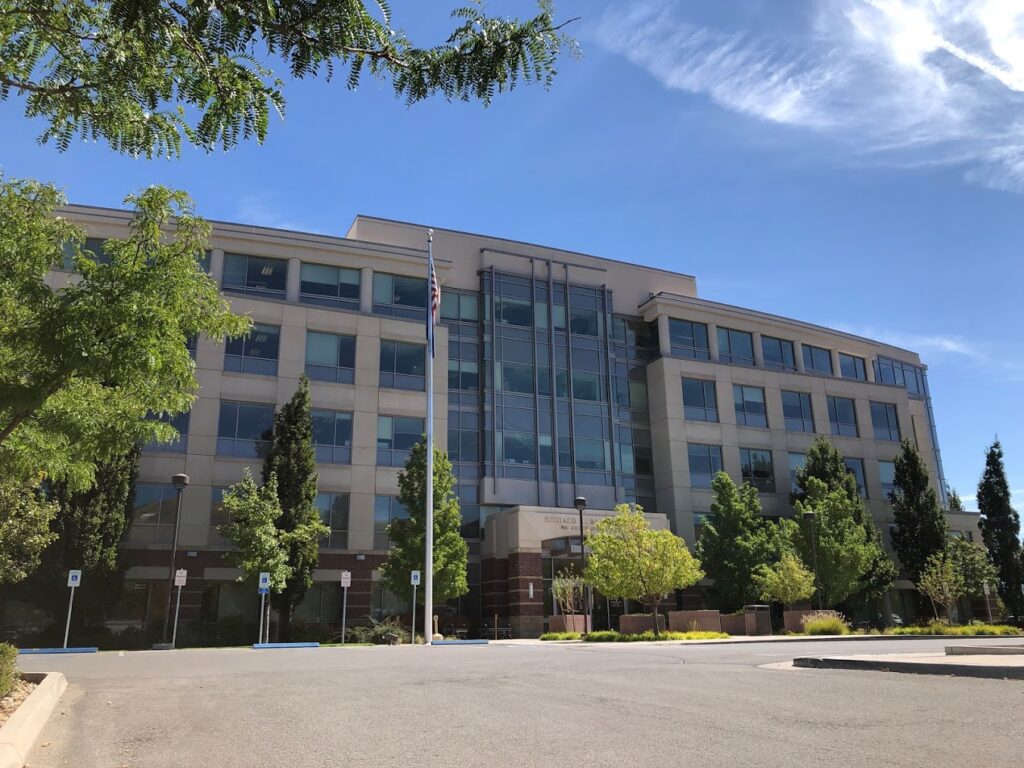
“Trying to convince us of their position”
Public records show throughout 2019, the year before NDEP approved what it would call the “best available science,” state regulators were wary of some of ARCO’s new assumptions.
Although NDEP declined to answer questions and redacted reports and email discussions about its technical analysis, records show the agency saw gaps in ARCO’s new technical approach.
In June 2019, Gardner sent Lovato and Collins an invitation to a meeting about the groundwater issues. Lovato responded, saying he would be “particularly interested in hearing about important issues that [ARCO] has failed to respond to meaningfully and why we think they are important.”
On July 2, Gardner wrote that ARCO and NDEP “teams are continuing to work to resolve the gaps in our current positions.” Lovato responded that “on the surface this sounds good, but...”
The rest of Lovato’s email was redacted. Gardner, in response, described ARCO’s approach.
Gardner said “this has been their MO now for a while ‐ trying to convince us of their position, and we continue to make them understand the uncertainties involved in this hypothesis.”
ARCO’s synopsis of a conference call on July 8 stated that the company had been working with the state “to achieve alignment on the collective understanding of groundwater conditions.”
But, the synopsis noted, “recent discussions with NDEP suggested however that the alignment in groundwater perspectives may be more divergent than previously perceived by [ARCO].”
On Nov. 6, Brian Johnson, a liability business manager for BP’s remediation management division, emailed Collins and Lovato to say he would be in South Lake Tahoe for a meeting on Nov. 14th. He said “we’d like to stop by just to catch up with you guys on the overall project.”
Johnson said the company wanted to share a video with drone footage showing construction progress for a different part of the cleanup and another video on “the geothermal anomaly.”
Collins replied that NDEP had a meeting with the tribes and the EPA that day. Johnson wrote back that the company officials were “staying in Reno, so we could meet for dinner or a drink.”
Through an agency spokesperson, Samantha Thompson, Lovato said that they did not meet for dinner or a drink, though he and Collins met at the Cracker Box in Carson City around that time.
Thompson’s email did not elaborate on what was discussed at the Cracker Box meeting, but it said that NDEP staff “have on occasion also eaten meals with leadership and representatives of EPA, BLM and the Yerington Paiute Tribe in the normal course of long work days and meetings.”
In replying to Johnson, Collins wrote that for an upcoming public meeting, he recommended referring “more generically to geothermal activities throughout history in this area,” as opposed to one area, and he wanted “to make sure our visuals and messaging are clear to the public.”
As Collins and Johnson discussed how to present the geothermal anomaly at a public meeting, there were still concerns, including from the state’s own consultant, Terraphase, that there was a lack of evidence to fully support the company’s hypothesis of a geothermal system in the area.
On Dec. 5, 2019, Gardner sent Lovato, Perdomo and Collins three documents that Terraphase, the state’s technical consultant, had prepared after reviewing a draft of ARCO’s revised report.
The first document, he wrote, “captures the essential comments and issues” in the draft report.
The second document was a “hotly debated” presentation NDEP gave to ARCO. The third was an original presentation Terraphase prepared. Gardner said he “cut 15 slides and revised many [other] slides” before presenting it to ARCO “because I felt that it did not offer a path forward.”
Still, Gardner wrote that the state was “aligned with the hypothesis and conclusions drawn.”
“[ARCO] did attempt to derail our full presentation, and partially succeeded by having extensive feedback/arguments back and forth on a few slides, so we ended up not showing them the Conceptual Site Model slides in the cut version of the presentation,” Gardner wrote.
The presentation, obtained by The Nevada Independent, suggests that the state’s own technical experts still questioned some of ARCO’s claims. The title of one slide said ARCO’s geothermal analysis “lacks compelling evidence of a fossil geothermal system.” The title of another slide said the “approach does not definitively delineate the extent of the [mine-impacted water].”
NDEP declined to comment on the presentation. A spokesperson for the agency also declined to indicate which slides NDEP cut before presenting the technical information to the company.
In an email on Dec. 6, Lovato provided direction on how to move forward, but it is redacted.
NDEP declined to comment on the email, as with most of the public records.
What is known is that two weeks later, on Dec. 19, ARCO requested the meeting on Jan. 23. As part of the Jan. 23, 2020 management agreements, summarized in the public records, the state agency agreed that a geothermal anomaly existed, “though extent of influence is uncertain.”
The records suggest that NDEP and ARCO appeared to resolve several issues at the Jan. 23 management meeting. In the end, NDEP would require the company to draw two models: a low-confidence model and a high-confidence model of the mine-related pollution in the area.
The high-confidence plume conformed to the company’s hypotheses; It showed contaminated water traveling only a few hundred feet from the mine. The low-confidence plume’s boundary extends farther but still stops far short of the boundary outline originally approved by the EPA.
The revisions marked a significant change in approach from the one ARCO had taken under EPA oversight. The final report would rely on multiple lines of evidence, but they were largely new or revised from lines of evidence used in the EPA-approved BGQA, the subject of multiple revisions and a years-long technical process that included vetting from the federal agency.
Even with the Jan. 23, 2020 management agreements, NDEP still disagreed with ARCO on a number of technical issues and pushed ARCO for language acknowledging the uncertainties.
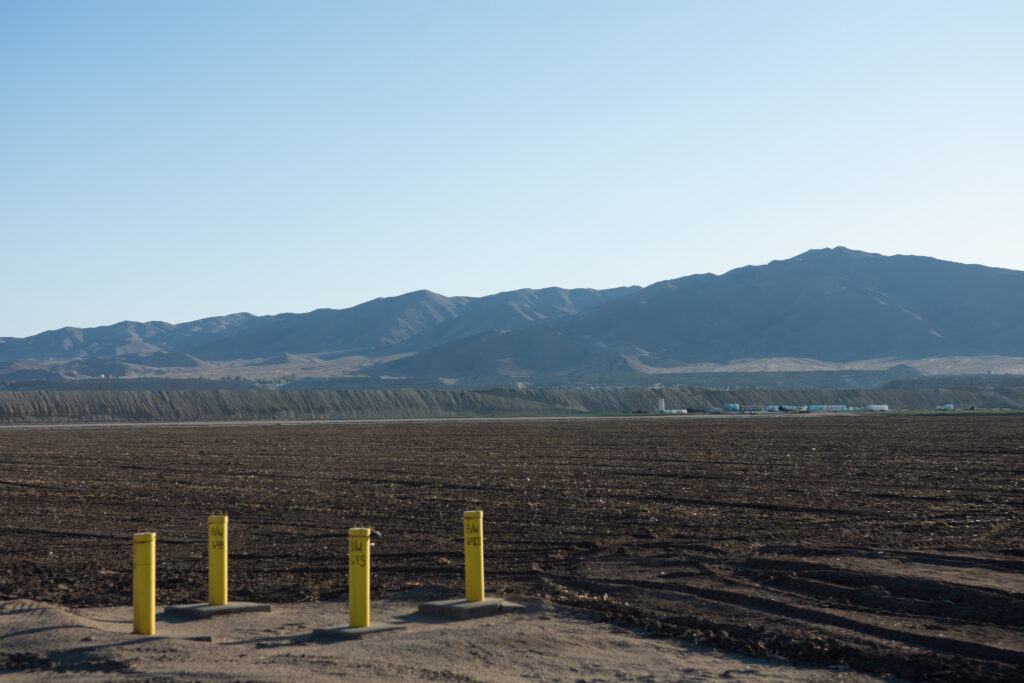
“Unacceptable and unapprovable as is”
Months before NDEP would release ARCO’s rewritten report in May 2020, NDEP was readying its public relations for the report. Top agency officials began media planning in February 2020.
On Feb. 4, Lovato sent a calendar invite to NDEP and EPA officials. The purpose of the meeting was to discuss a press release. Ahead of the meeting, Thompson, the agency’s spokesperson, sent a communications schedule that detailed a timeline for releasing the revised final report.
The agency planned to send a draft press release to Sisolak’s office and the Yerington Paiute Tribe on Feb. 19, according to a draft timeline. On Feb. 28, NDEP was scheduled to receive a final report from ARCO. NDEP would “announce approval” of the report the following week.
Between March 9 and March 13, the agency would conduct an interview with the Mason Valley News. The next week, the story would go live and the state agency would issue a press release.
Things did not go according to plan.
ARCO submitted a final report on Feb. 28, but it would not be released to the public for more than two months. Gardner informed the company that the current version was “unacceptable and unapprovable as is.” NDEP wrote a letter to the company on March 18 noting “multiple deficiencies as well as material defects in some sections of the [final groundwater report].”
The state sent ARCO a list of required revisions. In its comments, the state required ARCO to acknowledge the uncertainties and limitations in the lines of evidence it used to make its case.
In an email with an EPA official in late March, Lovato said “it was disappointing they didn’t turn in an approvable document but we are prepared to go to the mat on this.” The email also included comments on a forwarded copy of The Nevada Independent’s environmental newsletter.
The company resubmitted the report, and the state was ready to approve it by the end of April, records show. The final report included the geothermal analysis as “Appendix N,” and it cut the company’s responsibility for the mine-related pollution outlined in the EPA-approved BGQA.
On April 30, Lovato emailed Scott Gilles, Sisolak’s senior advisor, to brief him on the final report and an updated press plan. Lovato wrote that the report, a departure from the EPA-approved BGQA, was the “culmination of over 15 years of field work and technical analysis.”
With the approval of the final report, state officials also planned to announce that bottled water deliveries to about 110 residences, most of them on tribal land, would be phased out over the following six months. The bottled water program was initiated as a protective measure in 2004.
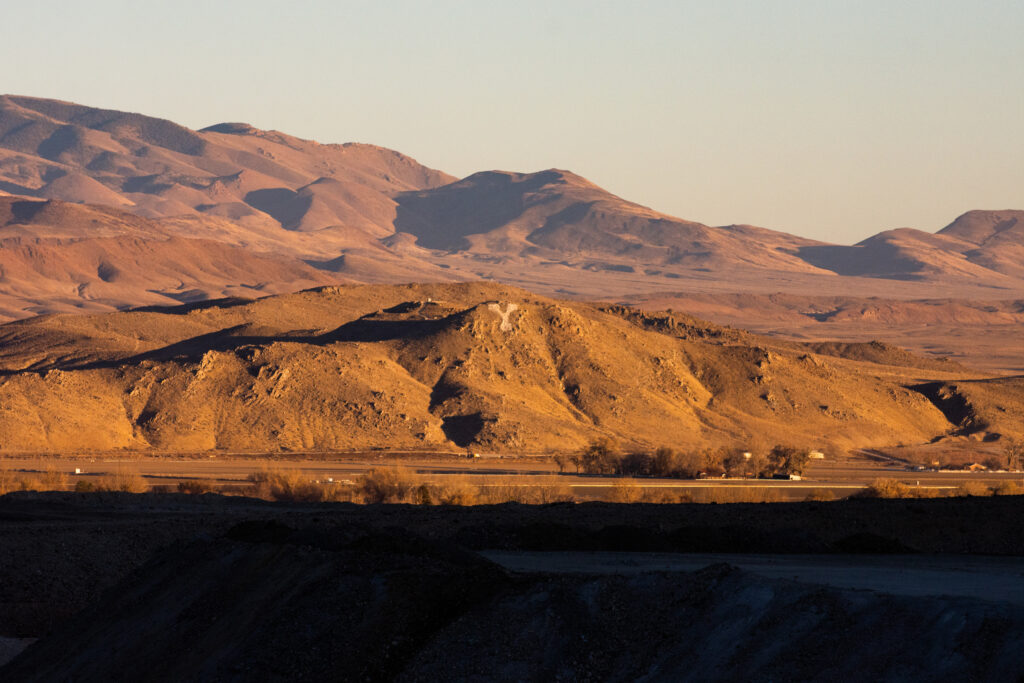
“The Tribe has had sufficient awareness”
On May 8, the state received a request from the Yerington Paiute Tribe for 45 days to review the final report before it was released to the public. Collins forwarded the request to his counterpart at the EPA, writing that “this is a bit of a surprise and to be quite frank, a late hit.”
Collins asked the EPA if it had ever granted the tribe a 45-day review period for a final report. Dante Rodriguez, a remedial project manager for EPA Region 9, replied that “in my experience on other sites, a partner agency is typically afforded review of final revisions if requested, although review of final revisions to a document are typically more in the order of 10 days (since only a very limited list of final comments are being addressed).”
Another EPA official seconded this, saying that his recollection was the EPA’s Anaconda site lead “tried to stay on the side of inclusiveness when considering requests for providing input but work with all parties to adhere to timeframes that were important for continued and productive progress at the site.” Because the agency no longer had oversight, he said that the EPA was “not close enough to the situation to make an objective recommendation” in the specific case.
NDEP denied the tribe’s request.
“NDEP believes the Tribe has had sufficient awareness and ample opportunity to discuss, review and comment during a number of well‐defined intervals leading up to and throughout the report review process as indicated below,” Collins wrote in an email reply on May 11.
Collins cited opportunities in 2019 for the tribe to provide feedback, though they were mainly on draft documents. He said he had informed the tribe’s chairman of the public relations rollout to release the report and the tribe would have other opportunities to comment later in the process.
That day, Lovato sent suggested talking points to Thompson and Collins. The email said “NDEP and its expert team approach this very conservatively,” referring to the extent of mine pollution.
On May 14, NDEP issued its press release approving ARCO’s revised report.
On the same day, Gardner emailed ARCO and its team of consultants to notify the company the state regulatory agency had approved the revised report — adding a celebratory message.
“As you all know, this was no small accomplishment, and we persevered through diligent, far‐sighted, respectful, and collaborative efforts, to create a workable, approvable Report,” Gardner wrote to the company. “If we were not under strict travel restrictions and COVID precautions, I would want to have a celebratory toast with each and everyone of you.”
In reference to the email, Lovato, through a spokesperson, said that Gardner did not meet with any representative of BP or ARCO and “the expression of accomplishment at completing a difficult task that involved many people and many hours and days of work was simply that.”
Cameron Nazminia, an ARCO spokesperson, said in an email that the company “continues to work with NDEP to address environmental issues at this site in a protective and timely manner.”
The company, Nazminia said in April, “is pleased to note that progress is being made toward implementation of the remedy and future contract awards will be made. The company remains fully committed to working closely with NDEP and the community to complete this work.”
Despite the state pushing back on technical issues and framing the report as a positive step for the cleanup effort, site experts expressed continued concerns about the report through 2020.
Months after the final report was finalized, an expert environmental consultant hired by the BLM said that although NDEP raised several concerns with the company, the report was “still far too limited, which has serious implications on the risk assessment and potentially to the health of residents and farmers located” in the path of groundwater outside the “potentially biased” model.
Consultants for the Yerington Paiute Tribe have written in comments that the state-approved report “remains a remarkable and questionable deviation” from the EPA-approved BGQA.
The state has continued to defend the report.
